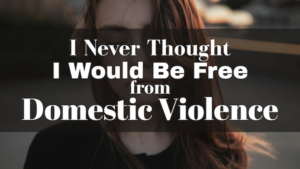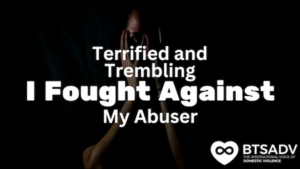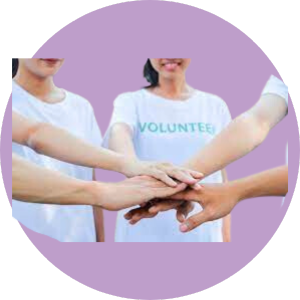Sitting in the dark lecture hall, I said to myself: “What am I getting myself into?” That was the first sexual assault prevention program I’d participated in; they’d put together a sort of comedy play. I also remember thinking: “If they have to explain to adults that it’s wrong to rape, things must be awful here.”
I was astonished when I heard the statistics: 26.4% of female and 6.8% of male undergraduates experience rape or sexual assault; those who identify as lesbian, bisexual, or gay are more likely to experience it.
But, mostly, I was in denial. After all, we were adults. Surely, no one would actually drink to the point of incapacitation.
A few weeks later, I was outside with a friend on a Friday night when we heard the sound of sirens pierce through the winter air. I saw someone being laid down on a stretcher and being carried away in an ambulance. A little later, a group of drunk students crossed the pavement in front of us, a bounce on their step. Two plus two.
So, fine, I take it back. First-year students do drink more than they should, on account of peer pressure, because they want to be a more extroverted version of themselves, and maybe also because, for the first time in their lives, they’re free to test the limits of their sobriety away from their parents.
Still, if there were abusers on campus, the people they’d prey on would know how to defend themselves. And what about their friends? They wouldn’t go to parties alone; friends have each other’s back, right?
Darkness Comes to Light
One night, I was heading to my dormitory when I bumped into two friends. We greeted and chit-chatted for a bit; then, one told me: “We better go now. She [pointing to my other friend] isn’t feeling too good.” I asked why that was; she looked fine to me. “Do you know so-and-so?” So-and-so was a guy whose name I didn’t know at the time, but his figure was quite memorable. Let’s say you could spot his hair across a football field. I’d also sat near him once, in the college cafeteria, and had sensed what I could only describe as bad vibes from him. She was distressed because the previous day, he’d join them at a party, led her to his room, and pressured her into having oral sex. She’d told him she wanted to stop, and his answer was: “now you need to finish what you started.” So, she did, against her will.
This was only a few weeks into our first year on campus, and, sure enough, the stats show that students are at the highest risk of sexual assault in the first few months of their first and second semesters in college.
I didn’t know what to say, except for: “You need to report this.” But she didn’t want to.
Only one in five college-age women who are sexually assaulted report the attack to the police. I didn’t want her, or anyone else for that matter, to become a statistic. I insisted for a bit. “I’ll report him for you then.” She didn’t want that either. In the end, I just said: “Well, if there’s anything I can do for you, just let me know,” which is the general thing people say when they want to help but have no idea where to begin.
A few days later, I saw her abuser in the cafeteria. He looked at me head to toe and seemed quite pleased with what he saw. He sat at my table and tried to make a conversation. I didn’t look or speak to him. The following semester, he got a girlfriend. I have no idea what their relationship was like, except that they were keen on PDA.
In the face of irrefutable evidence, I had no choice but to come out of denial slowly. Slowly, I said. “Well, it’s terrible here. It’s not like that where I’m from.”
Months later, in Europe, one incident makes it to national news: an incapacitated woman had been raped in a bus filled with college students, who filmed the crime and cheered the rapist on. That taught me. So much for “back where I’m from” and “friends have your back,” along with other lies I’ve loved.
Fear Followed Denial
What if I’m someone’s next target? We, fearful or cautious people, make subtle or not so subtle changes to our lives, don’t we? Not being out late, avoiding certain places and people, being hyper-vigilant, scanning the room for grinders at a party, memorizing their faces and tracking their every move, etc.
But it’s tiring. So, impatience follows fear: Why do we put all the pressure on potential and actual victims and not on the abusers? When will this end? I came across this quote recently: “Why do we keep telling introverts to step out of their comfort zone instead of telling the extroverts to make the zone comfortable?” Yeah, that’s right: why don’t you make the zone comfortable?
I have many questions. One being: What was that sexual assault prevention show for then? It’s great we have those programs and Title IX in place, but it’s not okay that after 30 years of having them, we still haven’t figured out which ones actually work.
Rape Prevention
There are four main approaches to rape prevention: prevention programs with men, risk-reduction programs with women, mixed-gender programs, and community-level programs.
A study found that, for women, programs that address alcohol-facilitated assault and teach self-defense are the most effective. The authors of the same study argue that prevention with men is the most important pathway in creating rape-free college campuses. Men are resistant to participating in these programs because they don’t regard themselves as potential offenders and, therefore, believe prevention programs are irrelevant to them. Men are more willing to participate in prevention programs that treat them as “allies” against victims of sexual assault rather than potential rapists. These programs have been somewhat more successful in changing men’s attitudes towards sexual violence but not their actual behavior. In fact, research has found that 68% of college men who perpetrate are repeat offenders.
Gaps in Prevention Programs
Selecting men for a prevention program and women for another doesn’t honor gender non-binary students, and it invariably categorizes one group as abusers and the other as victims. But the study’s findings point to solutions more effective than the status quo, such as offering two types of programs: one for the prevention of abusive behavior and another targeting victimization, which could be mandatory for all students, regardless of gender.
Early Prevention
One last question remains: should we wait until college? By the time perpetrators reach college age, their abusive habits are too entrenched. Similarly, by the time victims reach college age, they have heard and begun to believe notions that put them at risk of harassment, e.g., the notion that they cannot say no. Some potential abusers genuinely believe they would never assault. Potential victims think it’ll never happen to them.
I’d argue we need to start teaching empathy and humility to admit that no one is immune to abusing or being abused in schools, well before college. Teen dating violence and sexual assault exist in high schools as well. We cannot remain silent and on an issue that affects both young and old. This means having a conversation with our youth early about relationships and boundaries.
Do we honestly expect to eradicate freshmen’s inaccurate beliefs about relationships and assault with a one-hour seminar? Sexual assault prevention is not a regular Math or English class where you learn concepts that you can later use at will. It is a strong moral foundation and a lifestyle of human decency; those take years to build.
References
Newlands, R., & O’Donohue, W. (2016). A critical review of sexual violence prevention on college campuses. Acta Psychopathologica, 2(2), 14.









